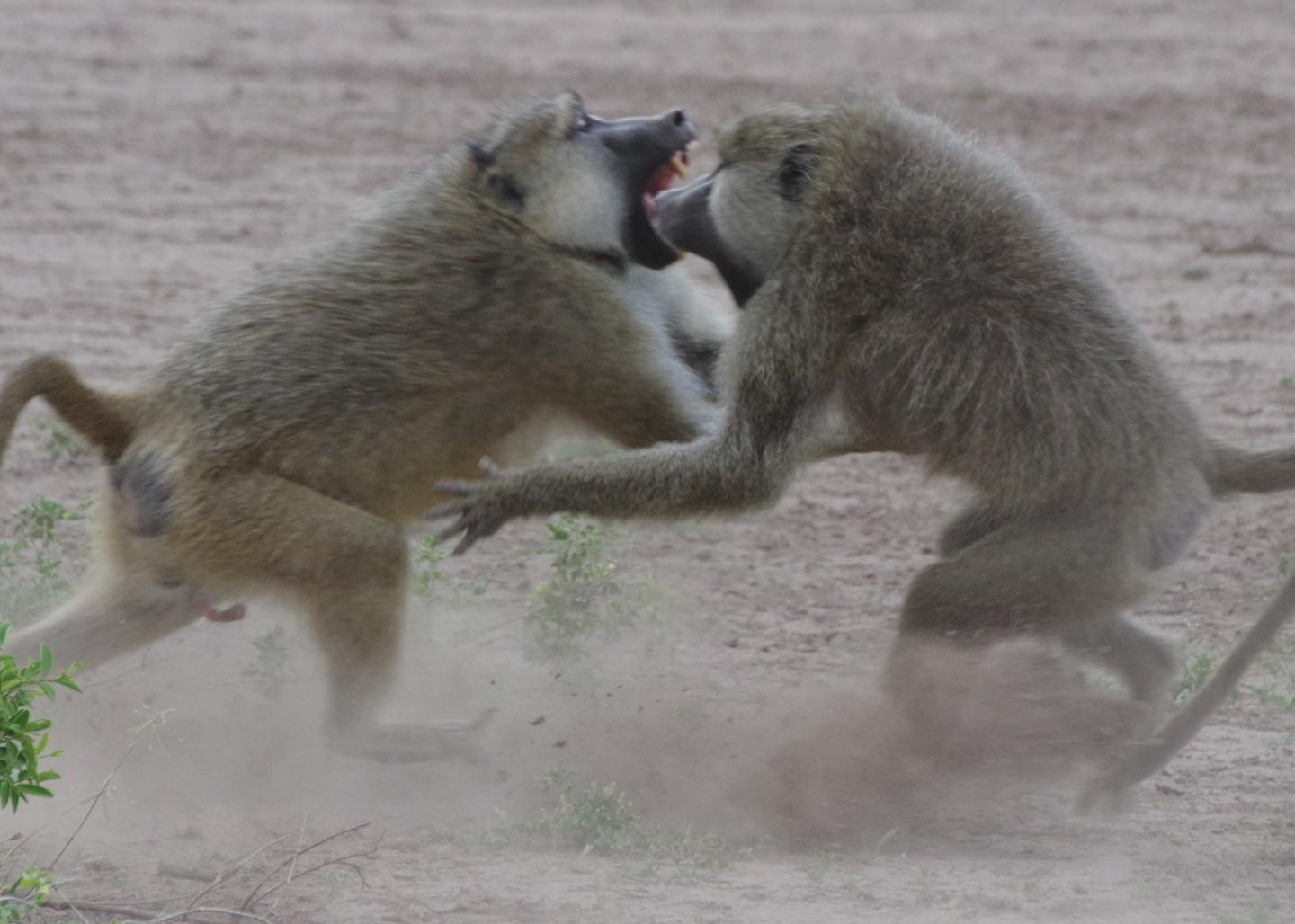Status-health connection depends, in part, on what it takes to get ahead

Credit: Photo by Elizabeth Archie, University of Notre Dame
DURHAM, N.C. — A growing body of evidence shows that those at the bottom of the socioeconomic ladder are more likely to die prematurely than those at the top. The pattern isn’t unique to humans: Across many social animals, the lower an individual’s social status, the worse its health.
That’s probably proof that these gaps aren’t fully explained by risk factors commonly attributed to humans, such as smoking, drinking or access to medical care, says Jenny Tung, associate professor of evolutionary anthropology at Duke University.
What’s trickier to determine is what causes what: Does the stress of low status make you sick? Or is it the other way around: does being sickly make it harder to get ahead and stay there?
New research by Tung, Princeton University’s Amanda Lea and colleagues suggests the answer depends, in part, on how the pecking order comes to be. The findings come from a study of 61 wild baboons in Kenya, where females ‘inherit’ their status, but males must fight their way to the top.
Having a high-ranking mom practically guarantees success later in life for baboon females, whereas males have to rely on their size, strength and battle skills to jockey for position and earn their place.
In a paper published December 11 in Proceedings of the National Academy of Sciences, the researchers found strong links between status and how genes turn on and off in baboon males, but not females.
To be sure, status is linked to health and quality of life in both sexes: High-ranking females enjoy better access to resources like food and grooming than their low-ranking counterparts. And males who rise to the top and stay there generally have better mating success than those that don’t.
But when the researchers analyzed the animals’ immune cells for differences in gene activity, they identified more than 2,200 genes whose activity varied with status in males, but only 25 status-linked genes in females.
Genes related to inflammation were more active in high- than low-ranking males. But previous research in humans and macaque monkeys found the opposite pattern in females, whose status isn’t determined by fighting ability.
The best explanation, Lea said, is that the molecular signature of social status may depend in part on gender, but also on what it takes to climb the social ladder — family connections in the case of females, but strength in the case of males.
The research suggests that differences in immune gene expression may arise before male rank is established, and that a male’s eventual place in the hierarchy is a consequence of variation in gene expression, not a cause.
Males with more active immune genes may have an edge as they fight their way to the top, said Lea, currently a postdoctoral fellow at Princeton and the study’s first author. The results are consistent with previous studies of Amboseli baboons showing that high-ranking males recover more quickly from illness and injury than other males.
For females, it may be that factors other than rank and status are more important for immune function, the authors say. It’s not that low-ranking females don’t experience the stress and strain of subordination, but thanks to a social support network of close kin, they may be better equipped to cope.
“Low-ranking females can buffer themselves in other ways, such as by cultivating strong social bonds with kin,” Lea said.
Social status and immune health are interconnected, Tung said. “But increasing evidence suggests that the nature of that relationship depends on whether an individual is male or female, and whether they have to fight for status or it’s given to them.”
###
Other authors of this study include Mercy Akinyi, Ruth Nyakundi, Peter Mareri, Fred Nyundo and Thomas Kariuki of the Institute of Primate Research in Kenya; Susan Alberts of Duke, and Elizabeth Archie of the University of Notre Dame.
This research was supported by the National Science Foundation (NSF IOS 1456832, BCS-1455808), the National Institutes of Health (R01AG053330, R01HD088558, P01AG031719, R21-AG049936), the Leakey Foundation, the Triangle Center for Evolutionary Medicine, and the North Carolina Biotechnology Center (2016-IDG-1013).
CITATION: “Dominance Rank-Associated Gene Expression is Widespread, Sex-Specific, and a Precursor to High Social Status in Wild Male Baboons,” Amanda Lea, Mercy Akinyi, Ruth Nyakundi, Peter Mareri, Fred Nyundo, Thomas Kariuki, Susan Alberts, Elizabeth Archie, Jenny Tung. Proceedings of the National Academy of Sciences, December 11, 2018. https:/
Media Contact
Robin Ann Smith
[email protected]
919-225-6208
Original Source
https:/
Related Journal Article
http://dx.




